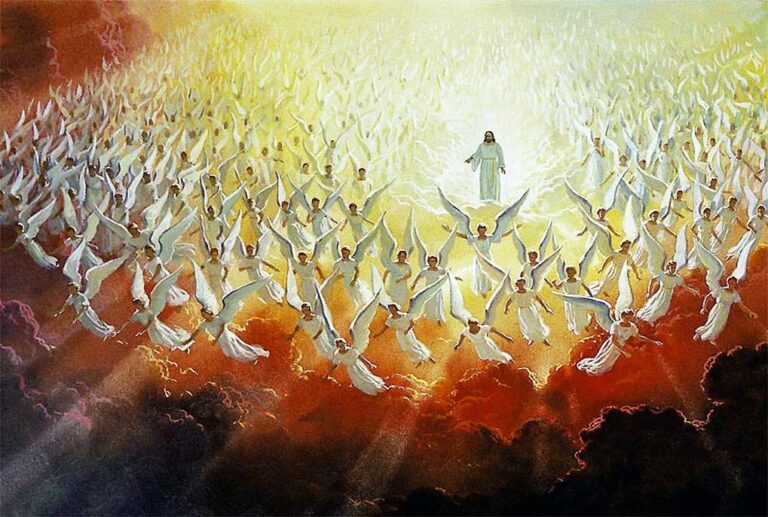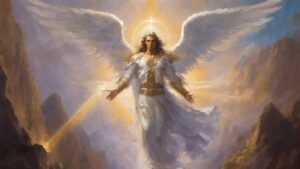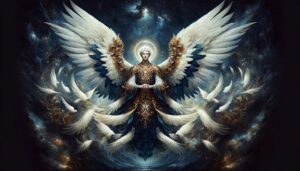Table of Contents
Who Is Angel?
The concept of angels as supernatural beings is present in various religious and mythological traditions. Here are a few perspectives from different cultures:
Christianity: In Christianity, angels are seen as spiritual beings created by God to serve as messengers, protectors, and servants. They are often depicted as benevolent and are mentioned throughout the Bible. Archangels, such as Michael and Gabriel, are among the most well-known.
Islam: In Islam, angels play a significant role. They are considered sinless beings created by Allah to serve various purposes, including delivering messages to prophets and recording human deeds. Angels like Jibril (Gabriel) are prominent in Islamic tradition.
Judaism: Angels are also present in Jewish tradition, where they serve as messengers of God and agents of divine intervention. Michael and Raphael are examples of angels mentioned in Jewish texts.
Zoroastrianism: In Zoroastrianism, which is one of the world’s oldest monotheistic religions, angels (or divine entities) called Yazatas are considered benevolent and assist in maintaining order in the universe.
Other Mythologies: Angels or angel-like beings are found in various mythologies worldwide. For example, ancient Greek and Roman mythology includes winged beings like Nike, the goddess of victory.
Angels are often depicted as ethereal, benevolent beings with a connection to the divine. They may have wings, glowing auras, and are commonly associated with messages, guidance, and protection. The specific characteristics and roles of angels vary across different cultures and religious beliefs.
Purpose
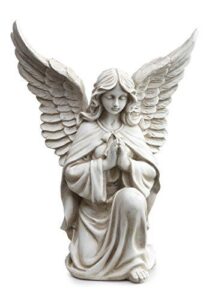
The purpose of angels varies across different religious and cultural beliefs. Here are some common themes associated with the purpose of angels:
Messengers: In many religious traditions, angels are messengers of the divine. They are tasked with delivering important messages or guidance from God or the higher power they serve. For example, the angel Gabriel is known as the messenger who delivered revelations to prophets in Islam and Christianity.
Protectors and Guardians: Angels are often seen as protectors or guardians, watching over individuals or specific regions. They may intervene to provide protection from harm or to guide individuals on the right path.
Servants of God: Angels are commonly viewed as servants of God or the divine. They carry out tasks and assignments assigned to them by the higher power, contributing to the overall order and purpose of the universe.
Record Keepers: In some traditions, angels are believed to keep records of human actions, deeds, and thoughts. These records are then used for judgment or as a basis for determining an individual’s fate in the afterlife.
Agents of Divine Will: Angels are considered instruments of divine will, carrying out tasks that align with the greater purpose and plan of the divine. They may act as intermediaries between the spiritual and earthly realms.
Guides and Helpers: Angels are sometimes seen as guides who help individuals navigate challenges or make important decisions. They may offer assistance in times of need or provide comfort and support.
Origins
The origins of angels trace back to diverse religious and mythological traditions, each imbuing these celestial beings with unique characteristics and significance. In Christianity, angels are believed to be created by God, serving as messengers and agents of divine will. Islamic tradition holds that angels were formed by Allah to carry out specific duties, including delivering revelations to prophets. Within Judaism, angels play a role as messengers and guardians, with each possessing distinct tasks in the divine order. In Zoroastrianism, ancient Greek mythology, and various other belief systems, angelic or angel-like entities are woven into the fabric of cosmological narratives, embodying different virtues and responsibilities. The multifaceted origins of angels reflect the rich diversity of human spiritual and cultural expression throughout history.
Orders
In Christian angelology, the hierarchy or orders of angels are traditionally organized into a celestial hierarchy. The specific order you provided is one interpretation, and it is often associated with the works of theologians such as Pseudo-Dionysius the Areopagite. Here’s a brief overview of each order:
Seraphim: Often described as the highest order of angels, Seraphim are said to be in continuous praise and adoration of God. They are depicted with six wings.
Cherubim: Cherubim are often associated with guarding sacred spaces. They are frequently depicted with multiple wings and can take on various forms.
Thrones: Thrones are considered to be carriers of God’s divine justice and authority. They are associated with the contemplation of God’s order.
Dominions: Dominions are believed to oversee lower choirs of angels, ensuring that their duties are carried out in accordance with the divine plan.
Virtues: Virtues are thought to bestow blessings and grace upon the material world. They are associated with acts of kindness and miracles.
Powers: Powers are seen as warrior angels, defending against evil forces and maintaining cosmic order.
Archangels: Archangels are messengers with a special role in human affairs. They are often involved in delivering important announcements or guidance.
Principalities: Principalities are believed to be guardian angels of nations and regions. They guide and protect groups of people.
Angels: The lowest choir, angels are the closest to humans and are often considered personal guardian angels. They are messengers and intermediaries between the divine and the earthly realm.
Family
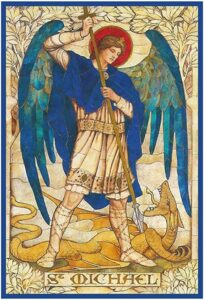
In traditional religious and mythological contexts, angels are typically not described as having families in the same way humans do. Instead, angels are often portrayed as spiritual beings created by a higher power, such as God, and are not believed to engage in familial relationships or procreation.
Angels are commonly depicted as existing in a hierarchy with specific roles and responsibilities, as seen in the orders or choirs of angels in Christian angelology. While they may work together in a divine order, their connections are more spiritual and based on their shared service to a higher purpose rather than familial ties.
Appearance
Descriptions of the appearance of angels vary widely across different religious and cultural traditions. In many cases, depictions of angels are highly symbolic and may not necessarily reflect a literal understanding. Here are some common themes in the descriptions of angelic appearances:
Wings: Many depictions of angels include wings, symbolizing their ability to move between the earthly and heavenly realms. The number of wings can vary; for example, Seraphim are often described as having six wings.
Radiance: Angels are often described as shining or radiating with light, symbolizing their divine nature. The radiance is associated with purity, holiness, and their connection to the divine.
Humanoid Form: While angel are often described as having a humanoid form, they may also have features that transcend the human, such as multiple faces or eyes. The humanoid form signifies their role as messengers and intermediaries with humanity.
Robes: Angels are frequently depicted wearing flowing robes, symbolizing their celestial status and purity. The color of the robes may carry symbolic meaning.
Halos: In some artistic representations, angels are portrayed with halos, a circular glow around their heads symbolizing their divine nature.
No Gender: Angels are often described as genderless or as having a gender-neutral appearance. This is especially true in depictions of higher angelic orders.
Symbology

Angels hold significant symbolic meaning across various religious, cultural, and artistic contexts. Here are some common symbolic elements associated with angels:
Messengers: One of the primary symbolic roles of angels is that of messengers. They serve as intermediaries between the divine and human realms, delivering messages, guidance, and divine revelations.
Protection: Angels are often associated with protection. They are seen as guardians who watch over individuals, communities, and nations, providing a sense of safety and reassurance.
Divine Guidance: Angels are symbols of divine guidance and assistance. They are believed to guide individuals on the right path, offer support in times of need, and provide inspiration.
Purity and Holiness: The imagery of angels is often associated with purity and holiness. Their radiant and luminous appearance symbolizes spiritual purity and their connection to the divine.
Wings: Wings are a common symbol associated with angels, representing their ability to move between the earthly and heavenly realms. Wings also signify freedom, transcendence, and the spiritual nature of these beings.
Harmony and Order: In angelic hierarchies, angels are often seen as part of a harmonious and ordered structure, reflecting the divine order and plan. Each angelic order has specific roles contributing to the overall harmony of the celestial realm.
Guides in Transition: Angels are often considered guides during periods of transition, such as birth, death, and other significant life events. They provide comfort and assurance during these moments.
Symbol of Hope: The presence of angels is sometimes seen as a symbol of hope, especially in challenging or difficult situations. Believers may find solace in the idea that angels are watching over them.
Artistic Inspiration: Angels have been a popular subject in art throughout history. Artists use angelic imagery to convey spiritual themes, emphasizing the ethereal and transcendent qualities associated with these beings.
Balance of Judgment and Mercy: Certain angels are associated with the execution of divine justice, while others emphasize mercy. This duality represents a balance in the cosmic order.
Angels FAQ
What do angels look like?
Descriptions of angels vary, but they are often portrayed as beings with a humanoid form, wings, and a radiant or luminous appearance. The specifics depend on cultural, religious, or artistic interpretations.
What do angels really look like?
The depiction of angels is largely based on religious and cultural beliefs, and there is no universally agreed-upon "true" appearance. Different traditions and individuals may have diverse interpretations.
What are angels?
Angels are spiritual beings often believed to serve as messengers, protectors, and servants of the divine in various religious traditions, including Christianity, Islam, and Judaism.
What do angels look like according to the Bible?
The Bible provides limited physical descriptions of angels. They are often described as having a human form, and some passages mention wings. For example, cherubim and seraphim are described in the context of heavenly visions.
"Where angels go, trouble follows."
This phrase is not a biblical quote but has been used in various contexts, often in a humorous or cautionary way. It doesn't reflect a literal belief about angels.
What are fallen angels?
Fallen angels are angels who rebelled against God and were cast out of heaven. The concept is often associated with Lucifer's rebellion. In Christianity, fallen angels are considered disobedient and aligned with evil.
How many fallen angels are there?
The Bible doesn't specify the exact number of fallen angels. The concept of a specific number is not explicitly addressed in biblical texts.
How does the Bible describe angels?
The Bible describes angels as messengers of God, often appearing to deliver important messages or guidance. They are portrayed as beings who serve God's will.
How many angels are there?
The Bible mentions vast numbers of angels, but it doesn't provide a specific count. The idea is that there are multitudes of angels in the heavenly realms.
How do I find out who my guardian angel is?
Beliefs about guardian angels vary. Some people turn to prayer or meditation for guidance. However, the concept of specific knowledge of an individual guardian angel is not universally accepted in all religious traditions.
Who are my guardian angels?
According to the day and month you were born you can find out who is the angel who takes care of your path. There are a total of 72 angels for the 12 months of the year and each of us has one, who guides and helps to resist in life. Which is your guardian angel according to the day you were born.
How many angels are named in the Bible?
A few angels are named in the Bible, including Michael and Gabriel. However, the majority of angels in biblical accounts are not named.
How many angels fell from heaven?
The Bible doesn't specify the number of angels who fell from heaven. The rebellion led by Lucifer (who became Satan) resulted in a group of angels being cast out.
Who are the seven fallen angels?
The fallen angels are named after entities from both Christian and Pagan mythology, such as Moloch, Chemosh, Dagon, Belial, Beelzebub and Satan himself.
What color eyes do Earth angels have?
The notion of Earth angels is not universally recognized in religious traditions, and any associated physical characteristics, such as eye color, would be subjective and not rooted in theological teachings.
When were angels created?
The Bible doesn't provide a specific timeframe for the creation of angels. They are considered part of the divine creation, existing before the creation of the material world.
What does the Bible say about guardian angels?
While the Bible mentions angels and their roles, the concept of individual guardian angels is not explicitly detailed. Some interpretations suggest that angels play protective roles, but specifics can vary.
Who are the angels of God?
Angels of God are celestial beings mentioned in various religious texts, serving God in different capacities, such as messengers, protectors, and servants.
What angels are named in the Bible?
Michael and Gabriel are among the angels named in the Bible. Michael is often associated with protection, and Gabriel is known as a messenger.
Who are God's angels?
Angels are considered spiritual beings created by God to serve various roles in religious traditions. They are seen as messengers and agents of God's will.
